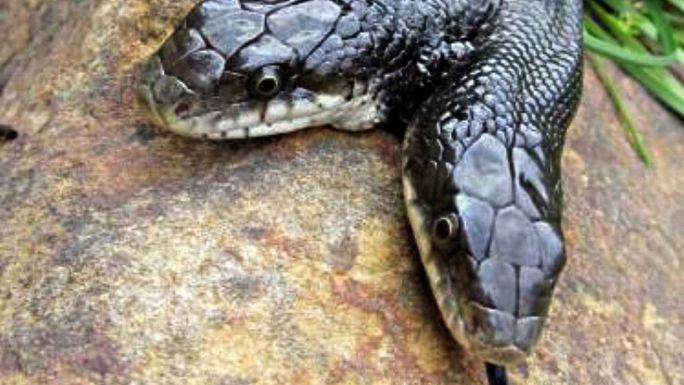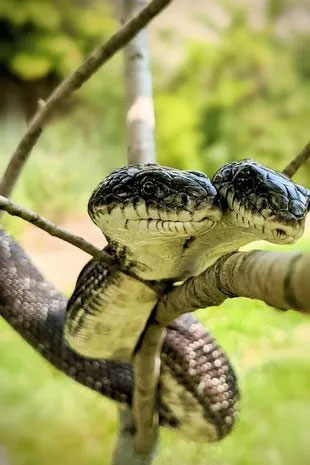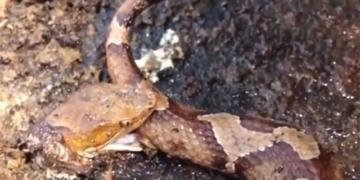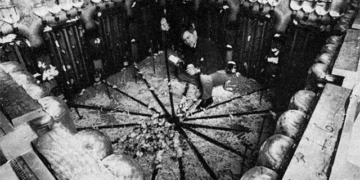The Cape Girardeau Nature Center in Missouri (USA) is housing an extremely rare two-headed black rat snake. This snake was first discovered in 2005 and, after 17 years, it now measures 1.52 meters in length.
Sharing insights on how to feed a two-headed snake, expert Alex Holmes at the Cape Girardeau conservation center describes: “For a normal snake of this size, it would easily swallow an adult mouse. However, this two-headed snake is different. Due to the fused spine, swallowing young mice, except for very small ones, becomes quite difficult.”
The expert explains that since each snake head has a tendency to “compete for food,” they must use a cup to block one head while feeding the other. The right head eats for a while before the left head is allowed to eat. This ensures that the food passes through the junction into the esophagus without causing “choking.”
“This two-headed snake shares a single stomach, but we feed both heads to stimulate their natural instincts,” Alex added.

The feeding method for the two-headed snake is quite special as one head must be covered. (Photo: Pen News)
The fact that this two-headed snake has lived for 17 years is also surprising to scientists. In reality, the survival rate of two-headed snakes is extremely low, approximately 1 in 100 million.
“Most conjoined baby snakes die shortly after birth. However, I know of another two-headed snake that lived for 20 years,” snake expert Steve Allain stated – “However, in the wild, I have never witnessed a two-headed snake living for 17 years.”

Two-headed snakes have a survival rate of only about 1 in 100 million. (Photo: Pen News)
Because they have two heads and two brains, they often “move in different directions,” making them suitable only for captivity.
“This makes them easy prey for hawks, weasels, or hungry pandas if they were to live in the wild,” Alex emphasized.


















































